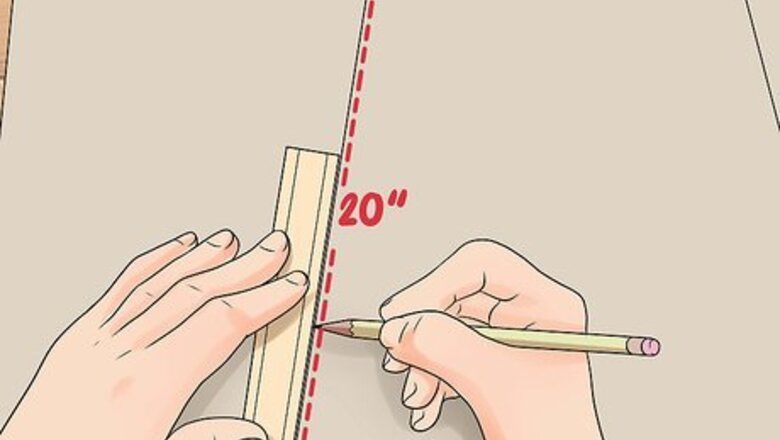
views
Making a Miniature Dutch-Style Windmill
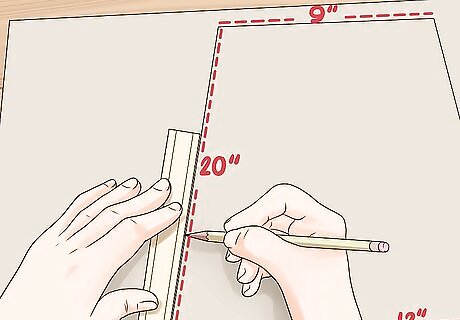
Create your side templates. Draw a polygon shape on a large sheet of cardboard or paper. If you use paper, use a heavyweight paper such as butcher paper or posterboard. The shape should be 9 inches (22.9 cm) on top, 12 inches on bottom, and 20 inches (50.8 cm) tall. Cut out the template. This will be used to create the sides of your windmill.
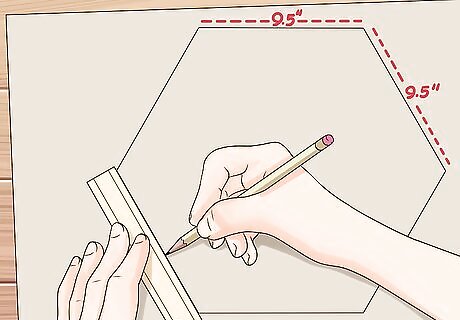
Create the template for the top. Draw a hexagon with 9.5” sides on a sheet of cardboard or heavy paper. Cut out the hexagon template. This will be used to create the platform at the top of your windmill.
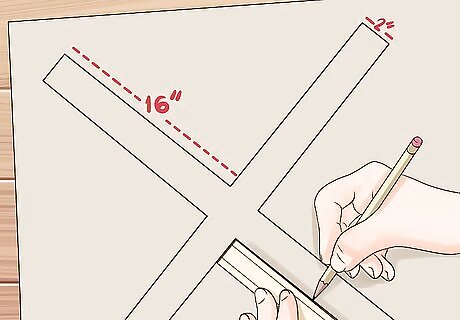
Create the template for the blades. Draw an “X” shape on a large sheet of cardboard or heavy paper. Each arm of the “X” should be 16” long and 2” wide. Measure 2” from the exact center of the “X” shape on four sides to create a square shape around the center of the “X”. Cut out the template as one piece, making sure not to cut into the square shape.
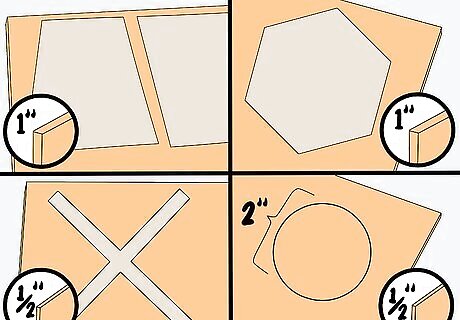
Transfer your template shapes to the plywood. Place the templates on your sheets of plywood. Use 1” plywood for the sides, top, and a 2”-diameter circle. Use ½” plywood for the “X”. Use a carpenter pencil to trace the shape of each template onto the wood. You will need six side pieces, one hexagonal top, one 2”-diameter circle, and one “X.” Use a drafting compass to easily draw a 2”-diameter circle onto the plywood. If you have a jar or can whose diameter is 2”, you could also use it to trace the circle. It is best to trace all the pieces you need onto the plywood before you start cutting. This way you make sure that you have laid out the pieces efficiently and have enough wood to complete your project. Do not use “chipboard” or MDF as it is likely to fall apart when it becomes wet.
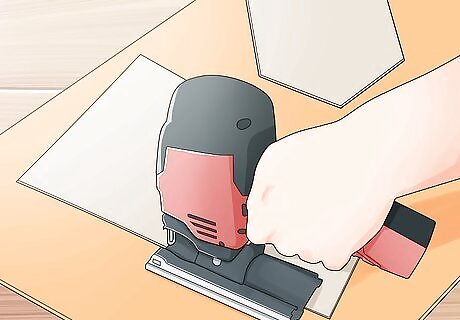
Cut out your shapes from the plywood. Place the plywood onto two sawhorses for stability. Use a jigsaw to cut out all the pieces: six side pieces, one hexagonal top, one “X” (for the blades), and one 2” circle. Circular saws are faster than jigsaws for long, straight cuts, but they cannot produce small shapes. If you have both, use a circular saw to cut out the sides and a jigsaw for the other pieces.
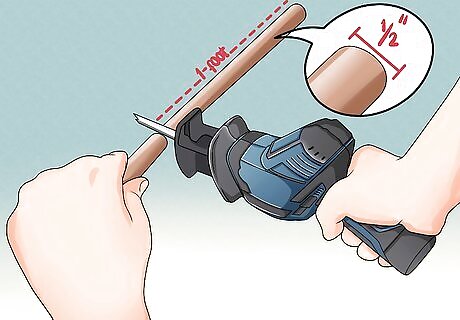
Cut a 1-foot length from a 1/2” wooden dowel. Solid wood dowels such as oak or poplar will be the sturdiest. You can often find short dowels at craft supply stores, but you can also use dowels from hardware stores.
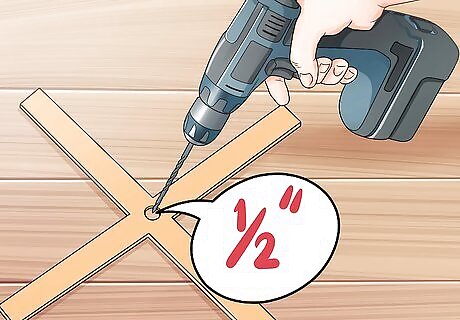
Drill ½” holes into the center of the “X” shape and the circle. If you do not have a 1/2”-diameter drill bit, use a drafting compass to draw a ½” circle on the wood first so that you can judge when the hole is large enough. The wooden dowel should be able to fit snugly inside these holes.
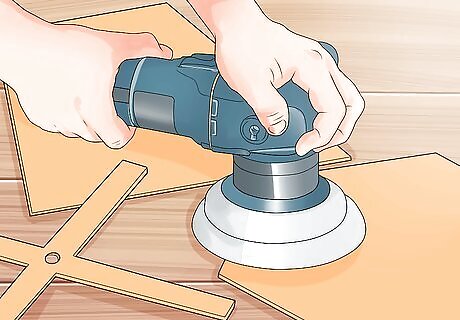
Sand the pieces. Using a handheld sander or sandpaper, sand all the pieces except for the dowel. This step will give your wood a smooth, even finish. It will also prepare the wood for painting or staining.
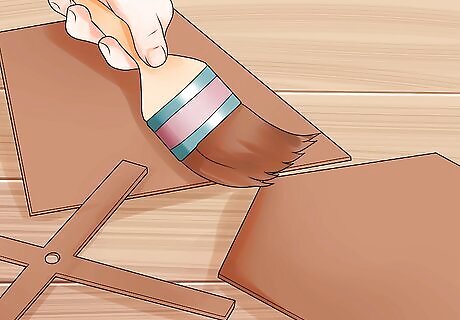
Paint or stain the pieces. You can choose a vivid color for your Dutch windmills, or you can use a natural wood stain to show the beauty of your wood. Once you have painted or stained your pieces, let them dry completely. This may take 24-48 hours, depending on the humidity in your area. If you use paint, choose an outdoor latex paint. If you use stain, follow it with at least one coat of clear polyurethane in order to provide weatherproofing.

Construct the windmill body. Place one of your six sides on a flat surface such as a worktable or level floor. The short end should be at the top, and the long end at the bottom. Place another side piece next to this one, also with the short end at the top and the long end at the bottom. Place a pencil between these pieces and push the wood together to form a gap the width of the pencil. Repeat this process with the remaining side pieces until you have laid all six side by side.
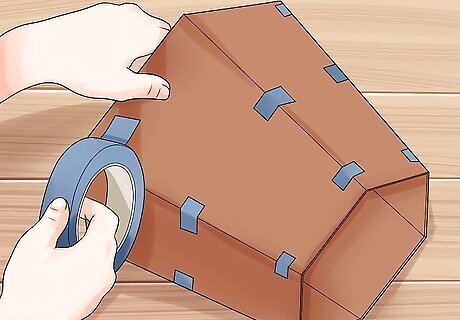
Use painter’s tape to connect the body pieces. Place strips of painter’s tape near the top, middle, and bottom of every joint created in the previous step. This will keep your side pieces together while you form the body shape.
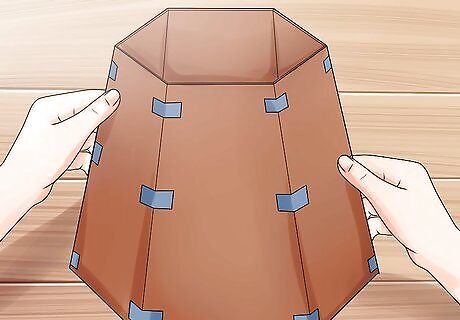
Set the windmill body upright. You may want to have a friend help you with this step. With the taped side facing outward, bring the edges of the body together to form a closed tower shape. Secure the final joint with painter’s tape. Test on a flat surface to make sure that the body is sitting level. If the body is not level, mark which piece(s) are too long and sand them down to stabilize the body. Sand gradually and check your work often.
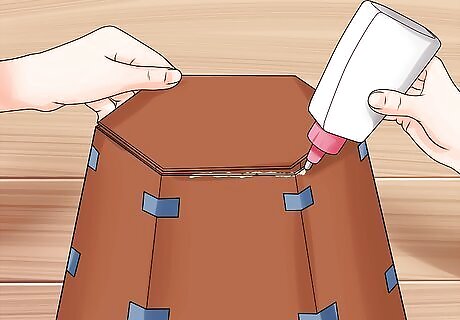
Apply wood glue to the top rim of the body. Place the hexagonal top onto the body. Press firmly, taking care not to push so hard that you collapse the body pieces. Set this aside and allow glue to dry completely.
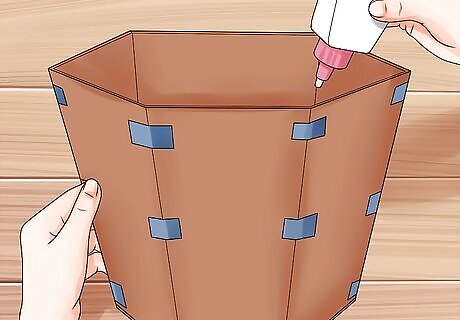
Flip the windmill body upside down. Apply wood glue to all seams inside the body. Don’t worry if you have some excess glue on the joints; you can scrape it off once it’s dry. Set aside and allow the glue to dry completely. Once the glue is dry, use a small chisel to scrape away the excess glue.
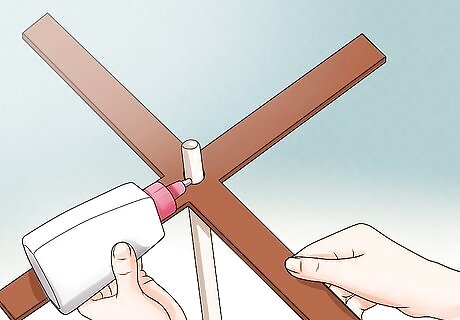
Apply wood glue inside the center hole in the “X”. Slide the 12” dowel about 2” into the hole. Apply wood glue around the seam. Allow to dry completely and then scrape off excess glue.
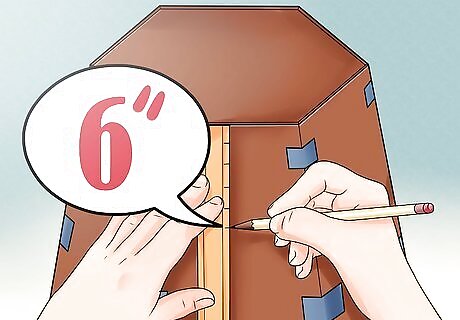
Draw a 6” straight line on the hexagon. Center the line in the middle of the hexagonal top. Pre-drill a hole at each end of this line. Screw in two screw eye hooks, adjusting so that the eyes are parallel.
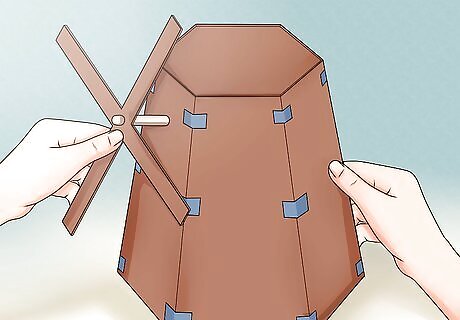
Attach the blades to the body. Slide the wooden dowel through both eyelets. The blades should have enough clearance from the body to spin freely. Apply wood glue to the inside of the center hole in the small wood circle and place it on the other end of the dowel.
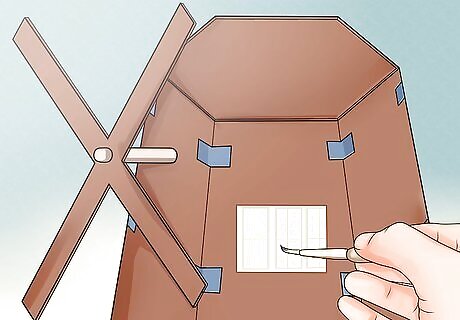
Paint on final details. Dutch windmills sometimes have doors or windows, so if you’d like, you can use a small paintbrush to add these touches. You could also paint on flowers, animals, or other things you find appealing.
Making a Backyard Ranch-Style Windmill
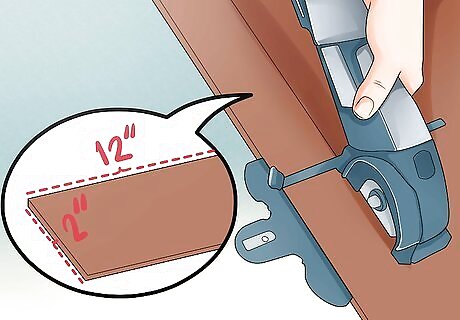
Cut eight sails from ½” plywood. These sails should be rectangles about 2” wide by 12” long. Using medium-grain sandpaper, sand the edges until smooth. Do not use MDF or chipboard as it will not hold up in outside weather.
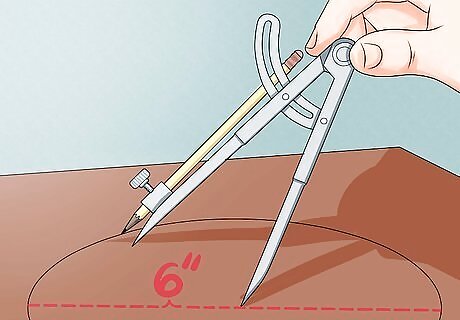
Use a drafting compass to draw a 6” circle on plywood. The circle should be 1” thick, so use 1” plywood or glue two ½” plywood circles together. Use a jigsaw to cut out the circle.
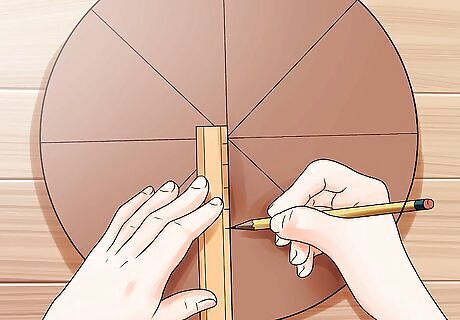
Divide the circle into 8 equal sections. Use a pencil and a ruler or straightedge to draw a line that divides the circle into two halves. Draw another line that divides it into quarters. Then draw two more lines to divide those quarters in half. When you’re finished, the lines on the circle should resemble a sliced pizza. Drill a ⅛” hole in the center of the circle. This should be the spot where all the lines you just drew intersect.
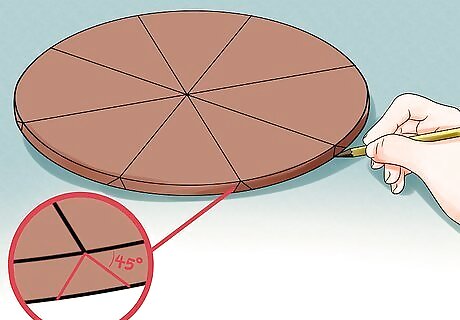
Draw 45-degree angle marks on the rim of the circle. Begin at each of the lines you drew in Step 3 and use a pencil to draw 45-degree angled lines across the edge. You may find it easiest to use a protractor or a “speed square” (a type of protractor used in construction).
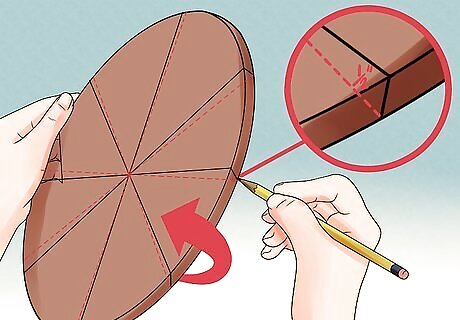
Flip the circle over. Repeat Step 3 on this side of the circle, placing your ruler at the other end of the 45-degree angled lines you just drew. When you’re finished, you should have two sets of lines that are offset from each other by about a half-inch.

Use a jigsaw to cut along the slanted lines. Each cut should be about 1” deep. Use a chisel or file to make sure these cuts are wide enough to fit the sails. To give the circle stability as you cut, you will probably want to clamp it to a worktable or large piece of wood set on two sawhorses. Move the clamp as needed.

Apply wood glue to the inside of each groove. Center each sail in a groove and fit in place. Set aside and allow the glue to dry completely. This may take between 24-48 hours, depending on the humidity in your area. Once the glue has completely dried, you can use a chisel to remove any excess glue.
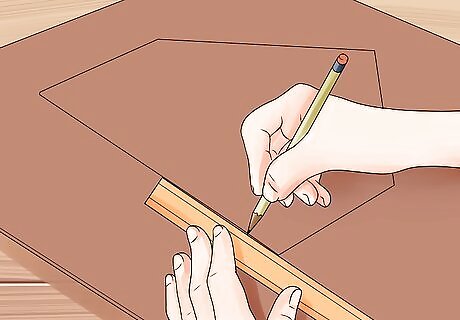
Cut a tail from plywood. The tail will be shaped like an elongated baseball “home plate.” Draw a 6” square on a piece of ½” plywood. Place a ruler or straightedge at the top of the square 2” from the outer edge of the square. Tilt it to a 45-degree angle. Use a pencil to draw a straight line from the top of the square to the outer edge of the square. This should create a triangle shape. Repeat on the other side.
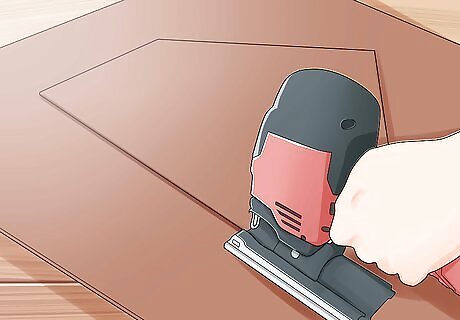
Cut out the tail with a jigsaw. Follow the lines you just drew so that the top of your tail angles inward and the bottom of the tail is square.
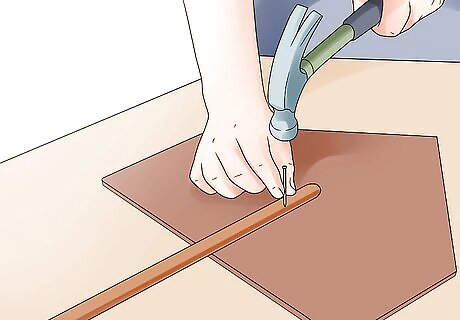
Attach the tail to one end of a 1” wooden dowel. The dowel should be at least 16” long as it will form the “boom” for your windmill. Use small finishing nails and a hammer to attach the tail.

Paint or stain the windmill. Use outdoor latex paint or a waterproof stain and clear polyurethane to paint the boom and the windmill (the circle with the sails attached). Allow to dry completely. You can wait to paint or stain the whole thing until it’s fully assembled, but that may be more difficult.
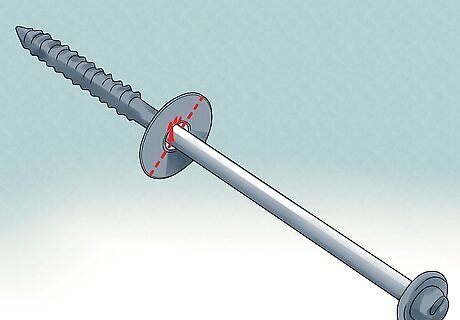
Thread a 1” metal washer onto a long wood screw. The screw should be at least 2” long and 3mm in diameter (approximately a #10 screw). Screw through the hole in the center of the windmill. Thread another 1” washer onto the screw.
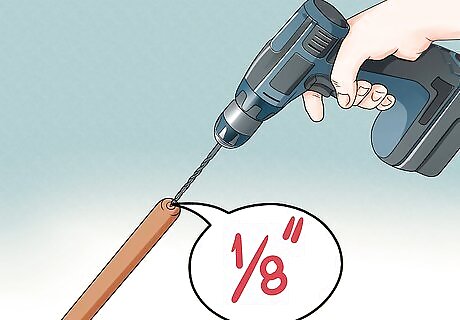
Pre-drill a ⅛” hole in the other end of the dowel boom. Attach the windmill to the boom by screwing it into the hole you just drilled. Don’t attach the windmill too tightly. It should be secure, but still loose enough to allow complete rotation of the circle.
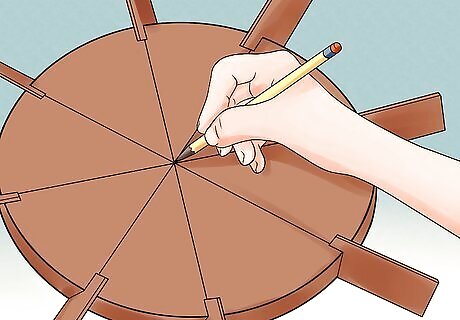
Find the center of your windmill. Balance the windmill by holding the boom on one finger. Adjust its position until you are able to balance the windmill on your finger. Mark that point in pencil.
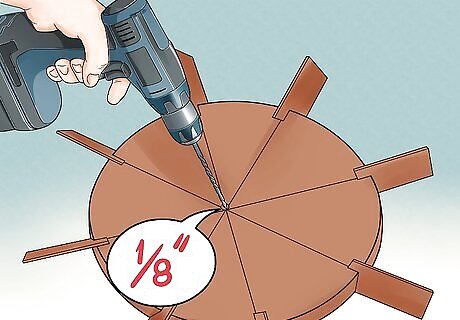
Drill a ⅛” hole through the boom at the place you marked. Attach windmill to a post by screwing through this hole into the post. Many hardware stores sell pre-cut fence posts. You can also use the rest of your wooden dowel as the post. Most dowels sold at hardware stores come in 48” lengths, so you should have about 32” remaining after you cut off the boom.













Comments
0 comment